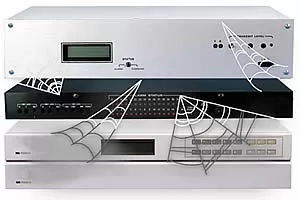Check out our White Paper Series!
A complete library of helpful advice and survival guides for every aspect of system monitoring and control.
1-800-693-0351
Have a specific question? Ask our team of expert engineers and get a specific answer!
Sign up for the next DPS Factory Training!

Whether you're new to our equipment or you've used it for years, DPS factory training is the best way to get more from your monitoring.
Reserve Your Seat TodayThis case study highlights several important factors you must consider when planning your remote monitoring system:
And unfortunately, that is exactly what was happening. Lippincott's Badger masters were increasingly prone to failure. He knew of no way of getting support or spare parts for the Badger systems, and Lippincott had to make repairs himself from cannibalized systems and a dwindling stock of hoarded spare parts.

"I had kept enough spares over time, so I was managing to keep them up. But once something goes wrong with these systems, it's hard to get them back up again. And it's a pain to set them up again once you have them running, too," said Lippincott.
The Badger remotes were deployed throughout Alabama and Georgia, monitoring older systems, mostly legacy analog microwave sites, according to Lippincott. "The microwave sites are older, but it's all significant equipment," said Lippincott. "Also, in all of the places we use tower lights, which are also monitored by the Badgers, and if they go out it's a pretty hefty fine."
Lippincott knew he had a problem, but he didn't know the solution to his problem was at his fingertips. Lippincott already was using T/MonXM to poll the more than 500 DPS Telecom remotes that were monitoring the newer parts of his network, and he was familiar with its capabilities. But until he saw "Badger" listed as an option in the T/MonXM software, Lippincott didn't know that DPS Telecom had developed a solution for polling legacy Badger remotes.
Lippincott's tech support call to Ron Stover turned into an expert consultation about how to create a legacy support solution for Southern Company.
"Glenn was very interested when I told him there was a software module for legacy Badger support," said Ron Stover. "I told him that we'd developed this solution for another client who had the same problem. We started discussing Glenn's issues with the Badger masters and how we could replace them with his T/MonXM system."